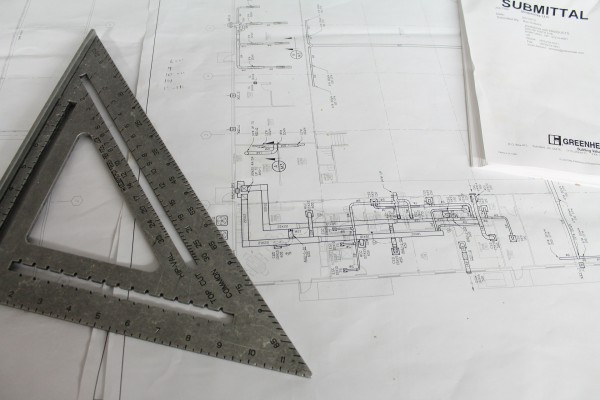Operative operational design
What problems can arise in operational spaces, and what methods can ensure crew contentment and safety?

In a recent conversation with a captain, I asked him about the importance of designers understanding the operational spaces on board a yacht. “Building a yacht and operating a yacht are two different occupations, and getting the two together would be a good idea,” he suggested.
Yachts are commissioned for owners and their guests, there is no getting away from this. However, for the best owner experience, it’s imperative for the spaces in which crew work to encourage efficiency and safety. “[Designers and owners] should consider how the size and movements of humans within a workspace can reduce fatigue, increase productivity and improve safety standards,” says Dean Vaughan, marine operations manager for Quorum Management. The study of this can hugely influence the shape and proportions of rooms, once the activities of those working in space has been correctly ascertained. “People really need to start with the human beings and their dimensions, how they move, and then the equipment, and look at it that way round. I think that they would be surprised.” There does however, he admits, often need to be a compromise.
A crucial problem encountered by crew is the inaccessibility of certain areas or equipment. “The problem with tender garages, the cables, the hoses, the control systems, the hydraulic power packs, are jammed into this inaccessible places. People then just ignore it.” If a filter is difficult to get to, for example, its cleaning may be neglected by crew. This not only increases the speed at which the filter would deteriorate, but also may cause a fire hazard. “To get maintenance done properly and to ensure you can do it all correctly, you need to design it so it encourages people to keep on top of it. When you’re crew and you’re busy, if it’s hard to get to, it’s on the back burner until it stops working,” Vaughan explains.
Yachts are like a mini-ecosystem, with each part interacting with another in different ways. In order for the vessel and its crew to work as effectively as possible, it can be beneficial for crew to be consulted in the early design stages. Vaughn also recommends that designers understand the daily working habits of crew. “Appreciating that crew work around the clock performing operational and security watches can be the difference between a guest or crew member sleeping blissfully or being disturbed by footsteps, doors opening, closing and shadows passing windows.”
The issues that arise after the yacht has been delivered can be avoided by early communication between all relevant parties. Vaughan continues: “The only way to get the designers, the builders and the equipment manufacturers involved is to have them understand that if it’s designed well, people can operate and maintain it successfully. If this happens, there will be fewer warranty claims and less complaints about the brand, meaning everybody should be a lot happier.”
"If it’s designed well, people can operate and maintain it successfully. If this happens, there will be fewer warranty claims and less complaints about the brand, meaning everybody should be a lot happier.”
Lee Archer, senior project manager for BMT Nigel Gee, argues that the use of engineering platforms is a method to ensure smooth operations in large yacht design. If a layout or design of engineering platforms are proven to be successful, replicating the same design for different sizes can be alleviate any problems. “One of the misconceptions about platforms is that you end up building the same yacht all the time. That isn’t how platforms work as typically, you invest in developing a whole form, that you know at its very smallest, it could be a 60m vessel, but you know it can be stretched successfully to 90m.”
The issues discovered on a yacht’s maiden voyage, or throughout the design process, will be understood in all subsequent designs. Archer highlights that the use of engineering platforms means that regulatory (and often safety issues) have already been addressed and any problems ironed out. “Your time required is greatly reduced and your ability to answer client requirements or questions very early on is greatly enhanced,” he explains.
It is in the owner’s best interest to ensure that the operating areas are accessible and functional to reduce the risk of equipment breaking and reduce warranty issues. This is not only important for cost-saving, but also to help ensure a safe working environment on board. Inherently, it is in the owner’s interest to ensure that the areas where crew are working and spending their time is as comfortable as possible. Of course, the owner is the priority for the ultimate design and use of the yacht. However, the importance of crew working areas in a yacht’s design should not be underestimated.
This subject will be discussed in detail at The Superyacht Design Forum. Click here to find out more.
Profile links
NEW: Sign up for SuperyachtNewsweek!
Get the latest weekly news, in-depth reports, intelligence, and strategic insights, delivered directly from The Superyacht Group's editors and market analysts.
Stay at the forefront of the superyacht industry with SuperyachtNewsweek
Click here to become part of The Superyacht Group community, and join us in our mission to make this industry accessible to all, and prosperous for the long-term. We are offering access to the superyacht industry’s most comprehensive and longstanding archive of business-critical information, as well as a comprehensive, real-time superyacht fleet database, for just £10 per month, because we are One Industry with One Mission. Sign up here.
NEW: Sign up for
SuperyachtNewsweek!
Get the latest weekly news, in-depth reports, intelligence, and strategic insights, delivered directly from The Superyacht Group's editors and market analysts.
Stay at the forefront of the superyacht industry with SuperyachtNewsweek



